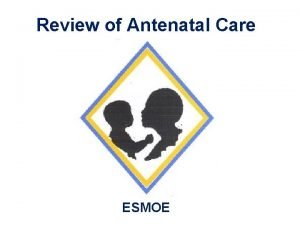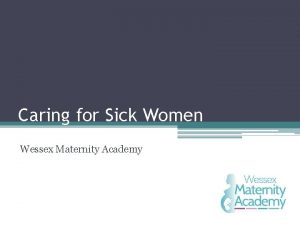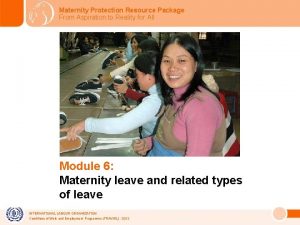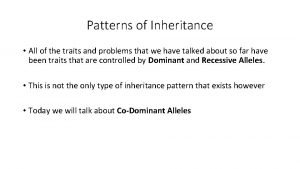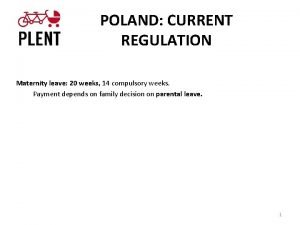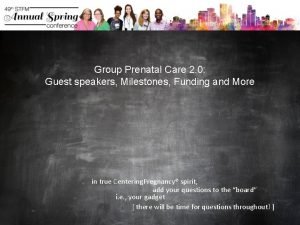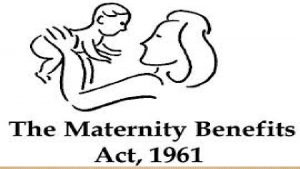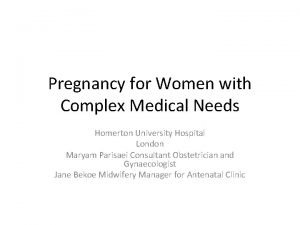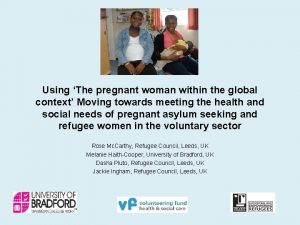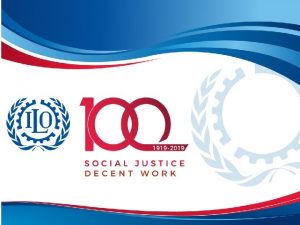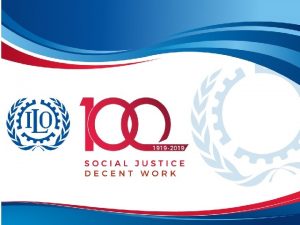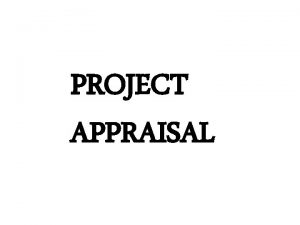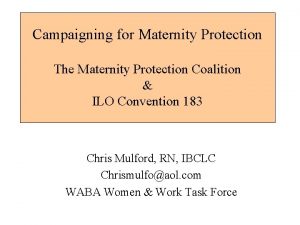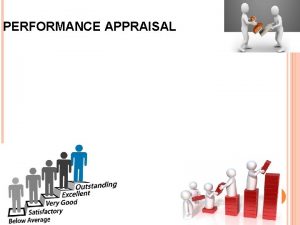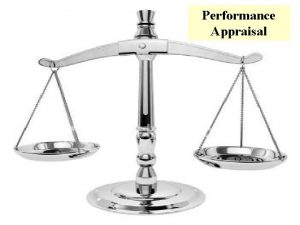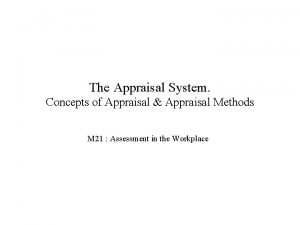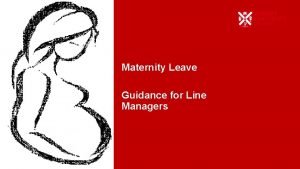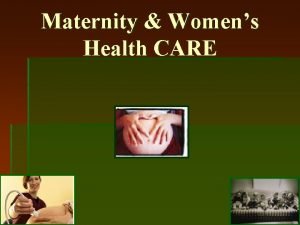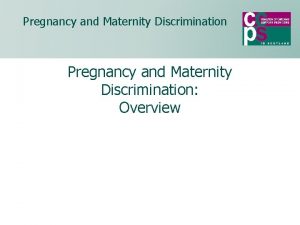AN APPRAISAL OF SOUTH AFRICAS MATERNITY PROTECTION FRAMEWORK











- Slides: 11


AN APPRAISAL OF SOUTH AFRICA’S MATERNITY PROTECTION FRAMEWORK THROUGH THE LENS OF THE ILO NORMATIVE STANDARDS Swikani Ncube Nokuthula Mbele *University of Johannesburg Callout Box PRETORIA § Callout One 04 OCTOBER 2019 § Callout To. § Callout Three.

INTRODUCTION q Intergovernmental organisations as well as specialised international agencies have been playing an important role in areas such as peace and security and human rights for a while. q The ILO is one such agency. Founded in 1919, it set out to pursue a vision based on the premise that universal, lasting peace can be established only if it is based on social justice. q The main aims of the ILO are to promote rights at work, encourage decent employment opportunities, enhance social protection and strengthen dialogue on work-related issues. q also focuses on Pregnancy and childbirth as factors that affect work because: “ pregnancy and maternity are an especially vulnerable time for working women and their families. Expectant and nursing mothers require special protection to prevent harm to their or their infants' health, and they need adequate time to give birth, to recover, and to nurse their children”

THE ILO MATERNITY PROTECTION FRAMEWORK q The Maternity Protection Convention, 1919 (No. 3), q the Maternity Protection Convention (Revised), 1952 (No. 103), and q the Maternity Protection Convention, 2000 (No. 183) SA has not ratified it. q Other instruments relevant to the protection of pregnanant and nursing women: Equal Callout Remuneration Convention, 1951 (No. 100), Declaration on Equality of Opportunity and. Box Treatment for Women Workers, 1975. § Callout One § Callout To. § Callout Three.

AREAS OF PROTECTION q HEALTH PROTECTION q MATERNITY LEAVE q CASH BENEFITS q EMPLOYMENT PROTECTION q NON-DISCRIMINATION Callout Box

HEALTH PROTECTION q adopt appropriate measures to ensure that pregnant or breastfeeding women are not obliged to perform work which has been determined by the competent authority to be prejudicial to the health of the mother or the child, or where an assessment has established a significant risk to the mother's health or that of her child. MATERNITY LEAVE q maternity leave of not less than 14 weeks. q six weeks' compulsory leave after childbirth Callout Box CASH BENEFITS § Callout One q Cash benefits shall be provided, in accordance with national laws and regulations. § Callout To. q Cash benefits shall be at a level which ensures that the woman can maintain§herself and her child Callout Three. in proper conditions of health and with a suitable standard of living.

NON-DESCRIMINATION q Each Member shall adopt appropriate measures to ensure that maternity does not constitute a source of discrimination in employment. q Exception made for fair discrimination. EMPLOYMENT SECURITY q A woman is guaranteed the right to return to the same position or an equivalent position paid at the same rate at the end of her maternity leave Art 8(2). Callout Box § Callout One § Callout To. § Callout Three.

MATERNITY PROTECTION IN SOUTH AFRICA q The Constitution q The Labour Relations Act 66 of 1995 q The Basic Conditions of Employment Act 75 of 1997 q The Unemployment Insurance Act 63 of 2001 q The Employment Equity Act 55 of 1998. Callout Box § Callout One § Callout To. § Callout Three.

MATERNITY PROTECTION IN SOUTH AFRICA NON-DISCRIMINATION q S 9 of the Constitution q LRA, EEA proscribe discrimination on the basis of pregnancy or anything related to a woman’s pregnancy. MATERNITY LEAVE q four consecutive months of maternity leave BCEA. S 25. q may commence maternity leave at any time from four week prior to the expected date of birth. q may not resume work for six weeks after the birth of her child unless certified by a medical practitioner or a midwife CASH BENEFITS q S 12 (1) (c) (Right to benefits) – a contributor is entitled to maternity benefits

HEALTH PROTECTION q No employer may require or permit a pregnant employee or an employee who is nursing her child to perform work that is hazardous to her health or the health of her child. q (2) During an employee’s pregnancy, and for a period of six months after the birth of her child, her employer must offer her suitable, alternative employment on terms and conditions that are no less favourable than her ordinary terms and conditions of employment EMPLOYMENT SECURITY q Labour Relations Act deems a dismissal automatically unfair if the employer dismisses an employee because she is pregnant, intends to get pregnant or for any other reason related to pregnancy Callout Box

AREAS OF CONCERNS q. Four months maternity leave is insufficient q. Maternity protection is limited to the formal sector q. No obligation on employers to provide paid maternity leave q. Health protection remains problematic. While there’s provision for free health care for pregnant and lactating mothers as well as children below the age of 6, the quality of health services remains problematic. Callout Box § Callout One § Callout To. § Callout Three.

